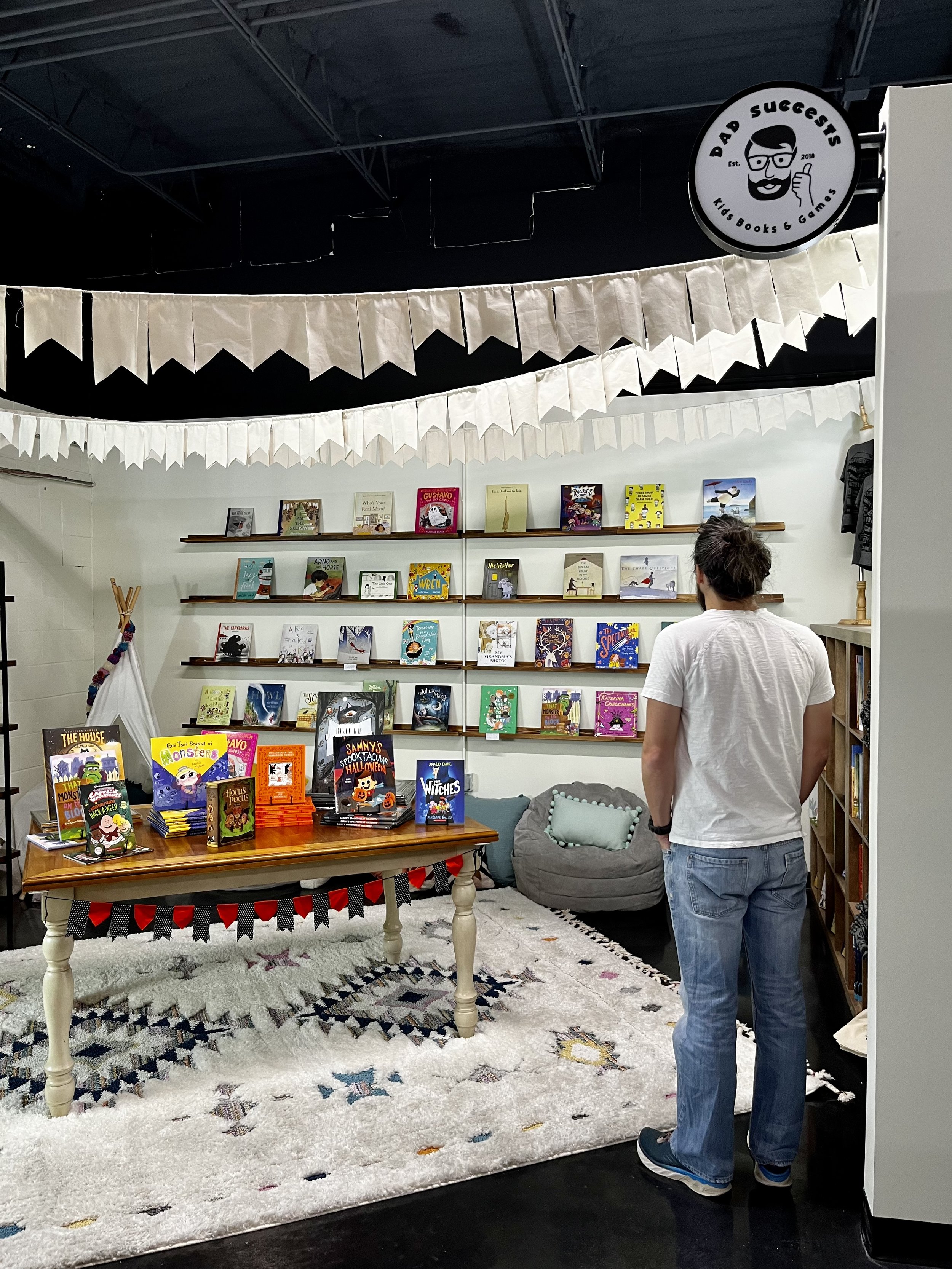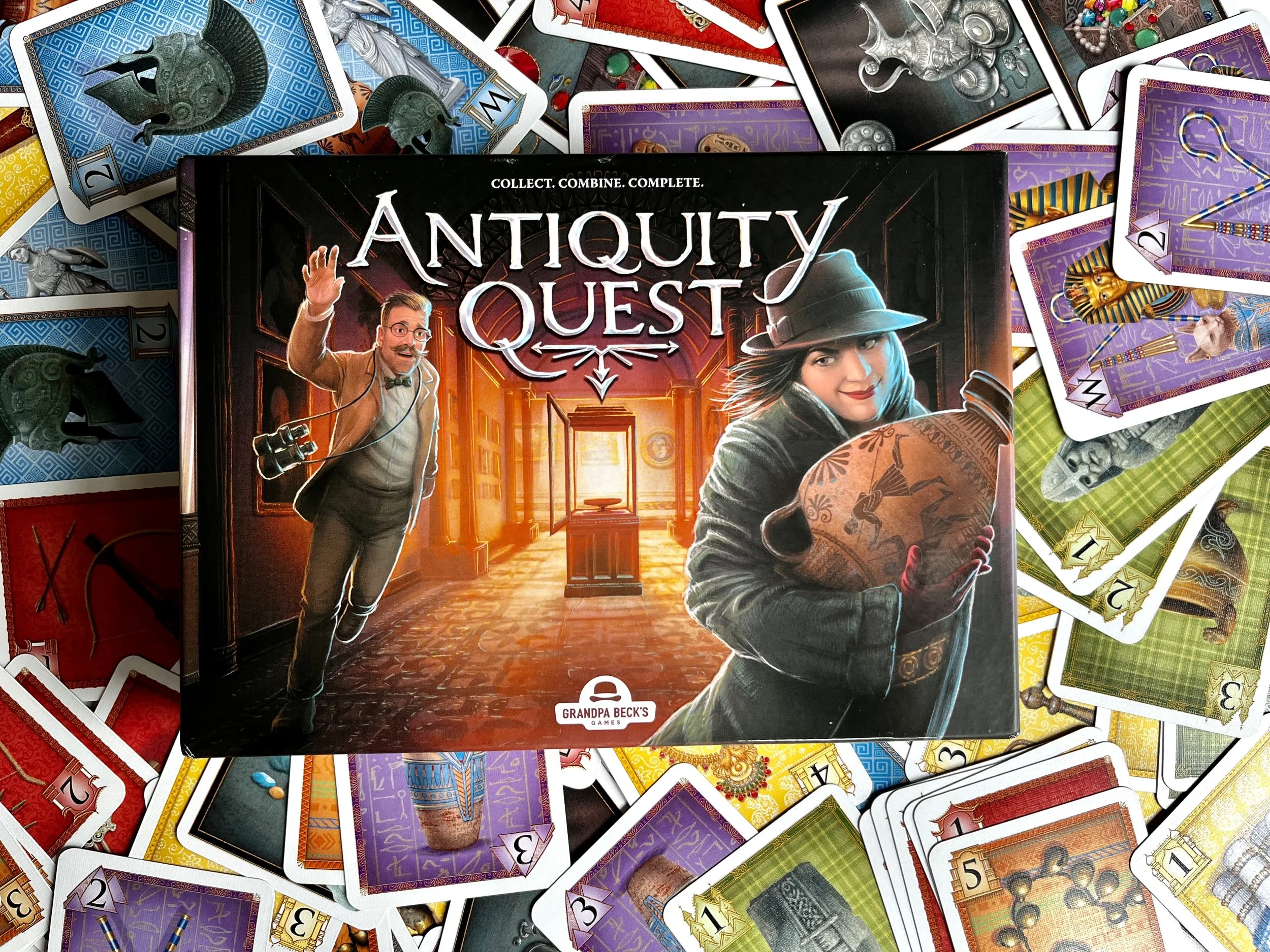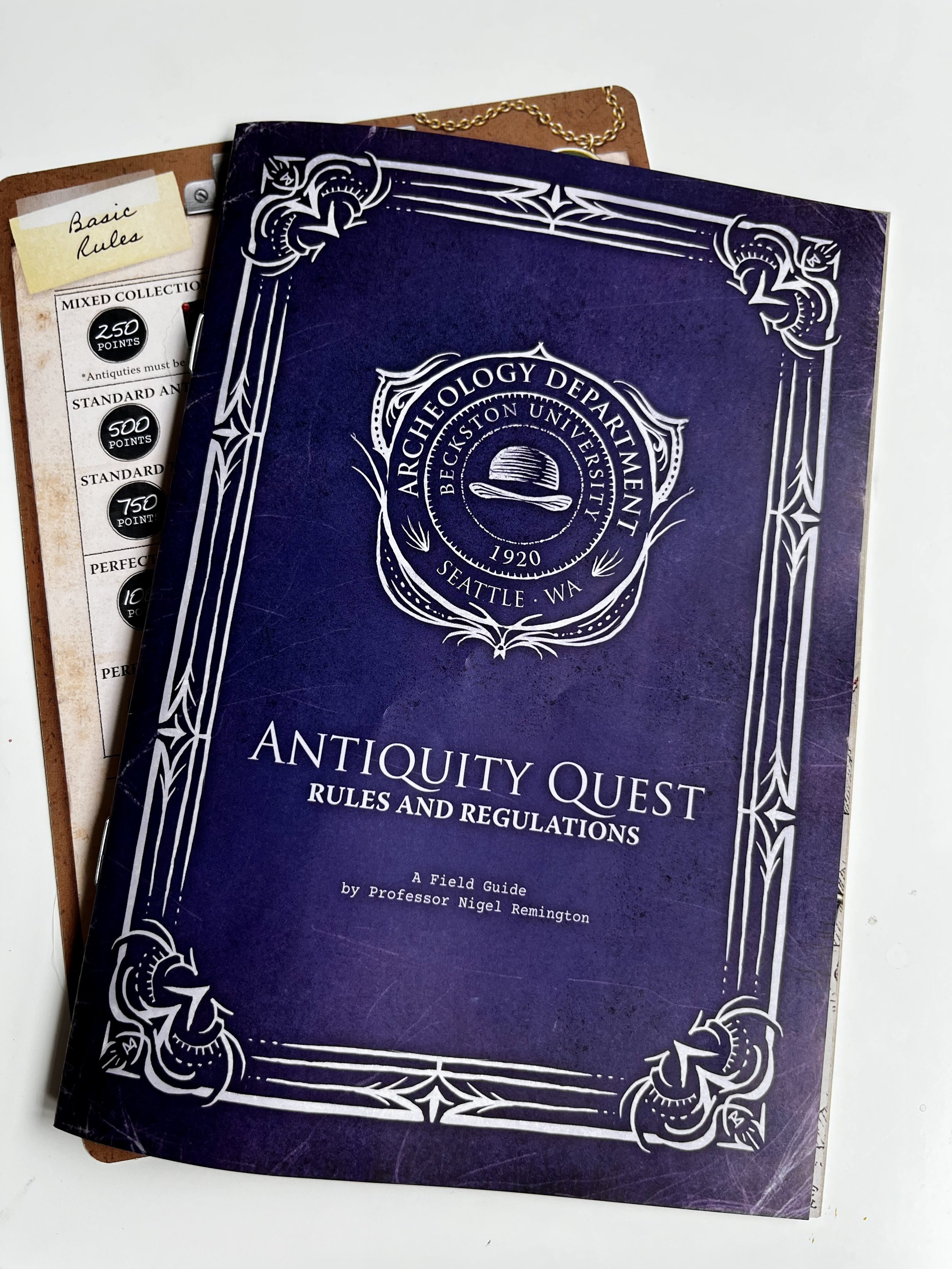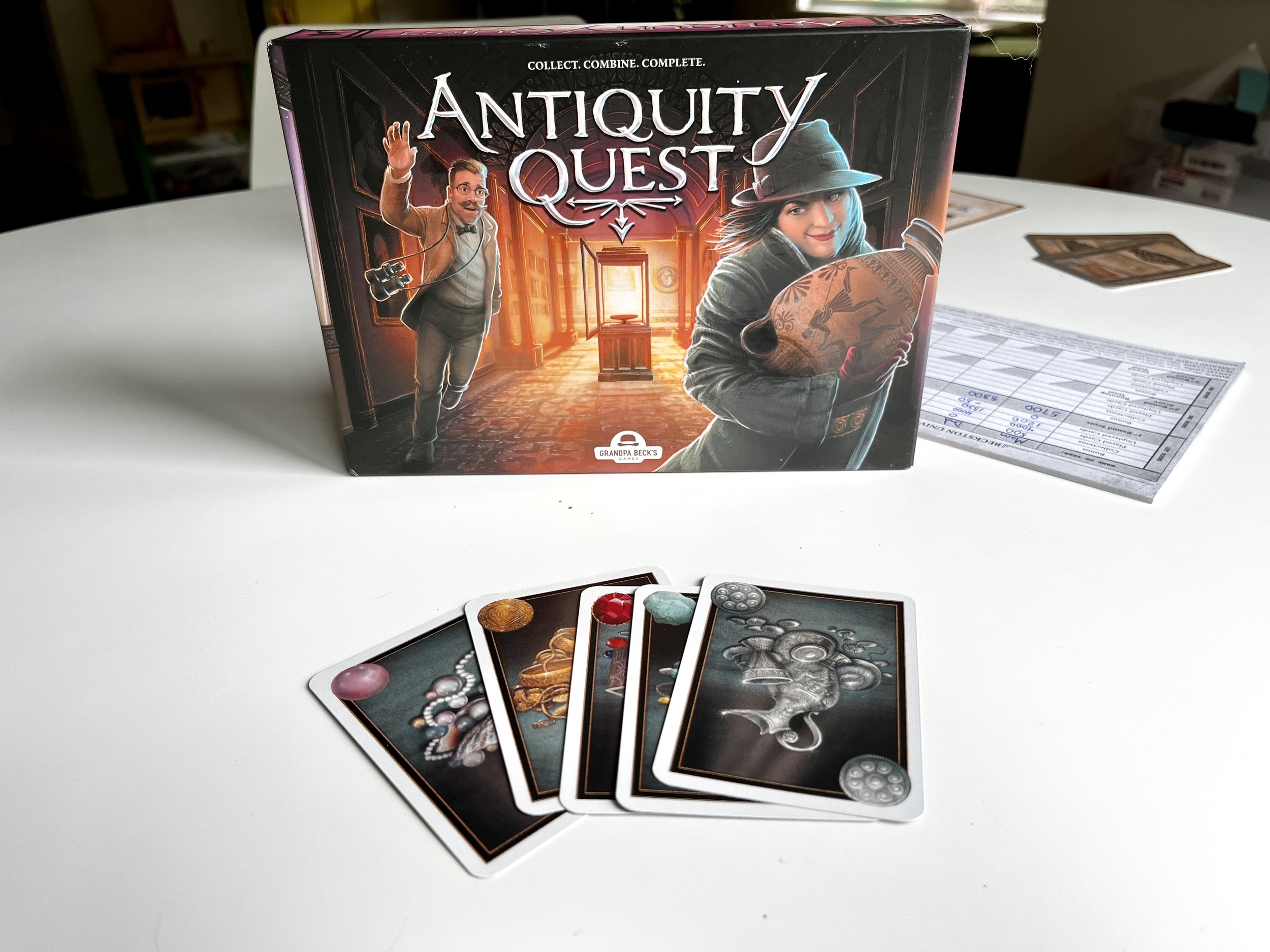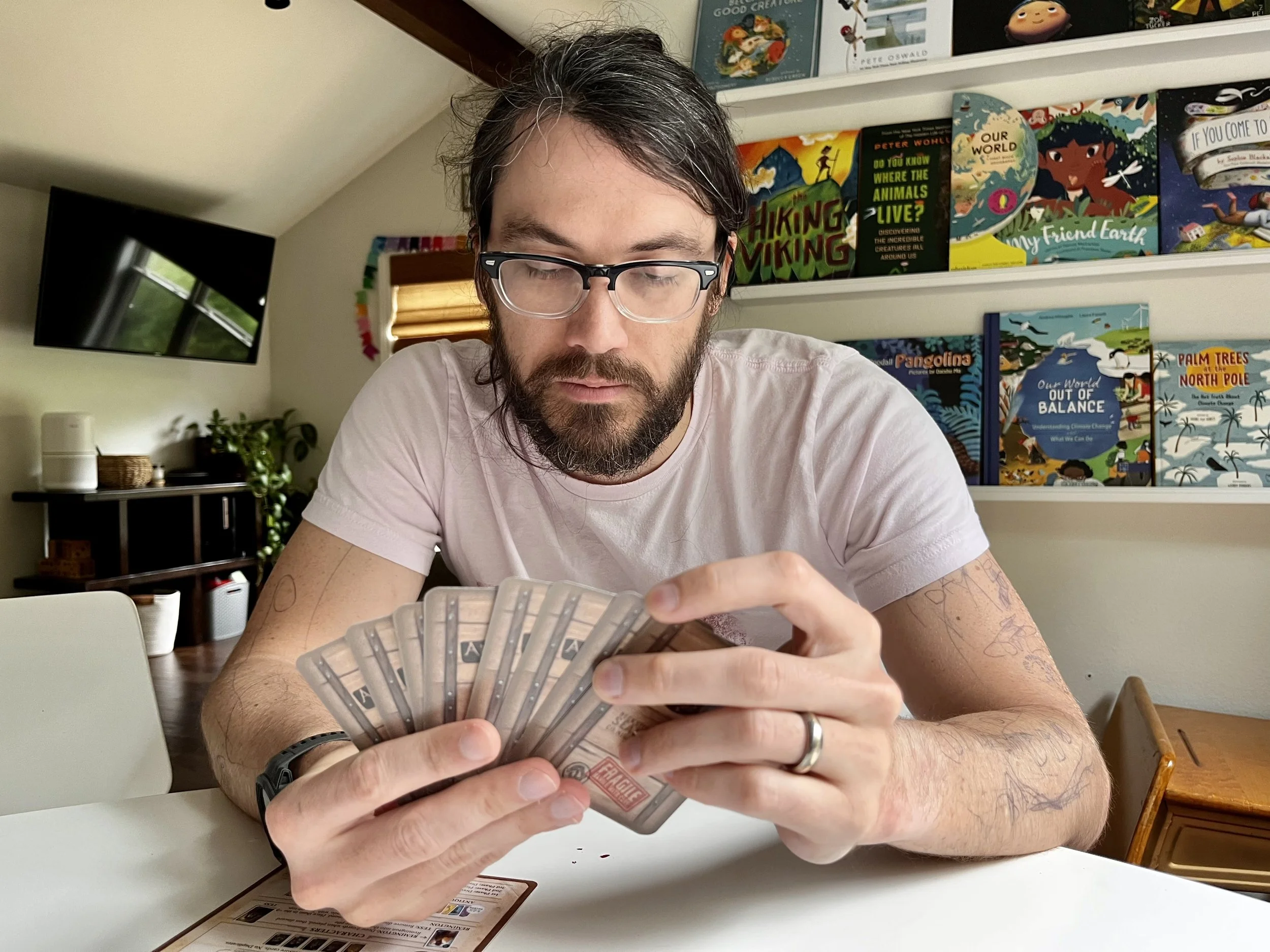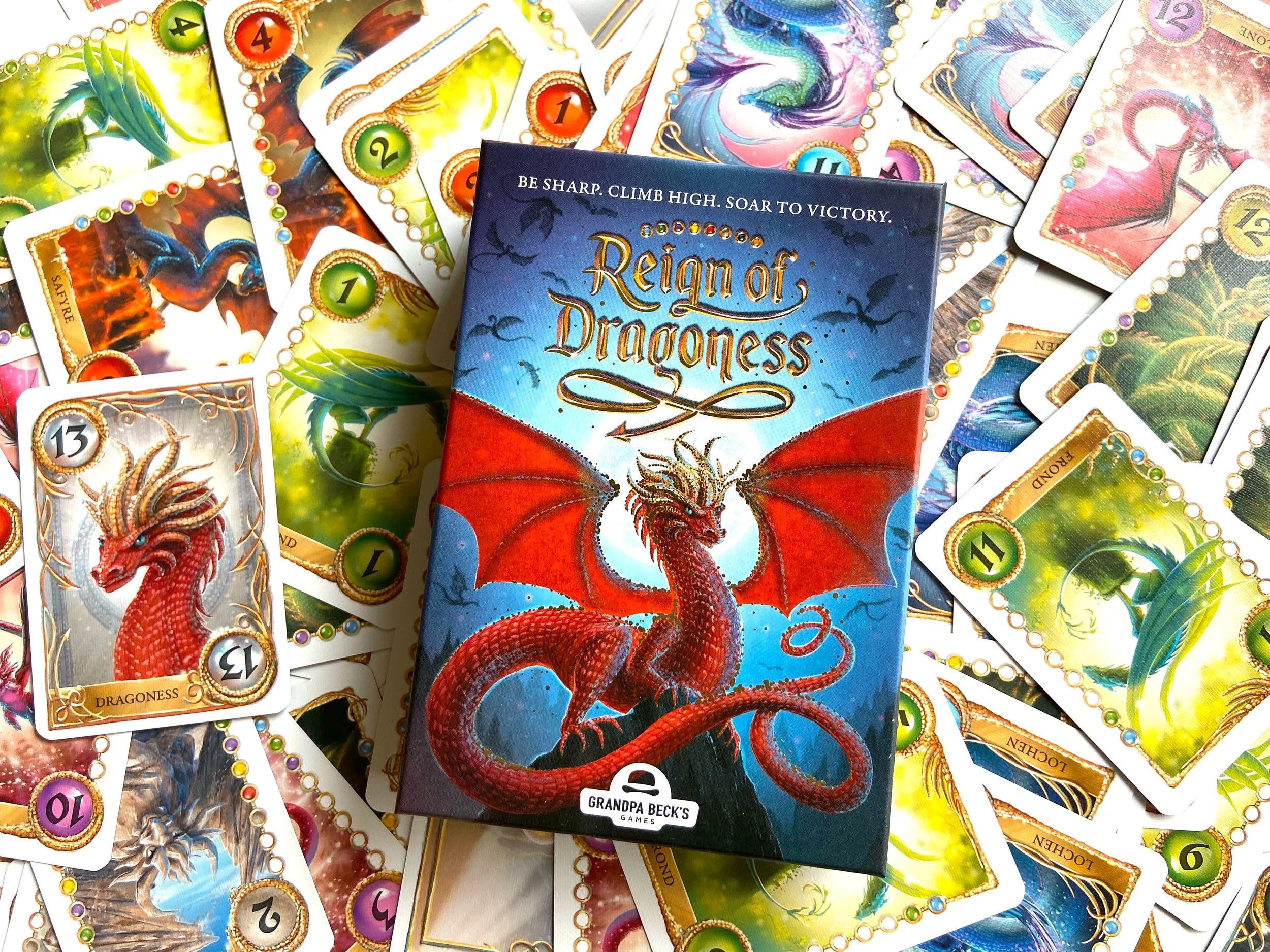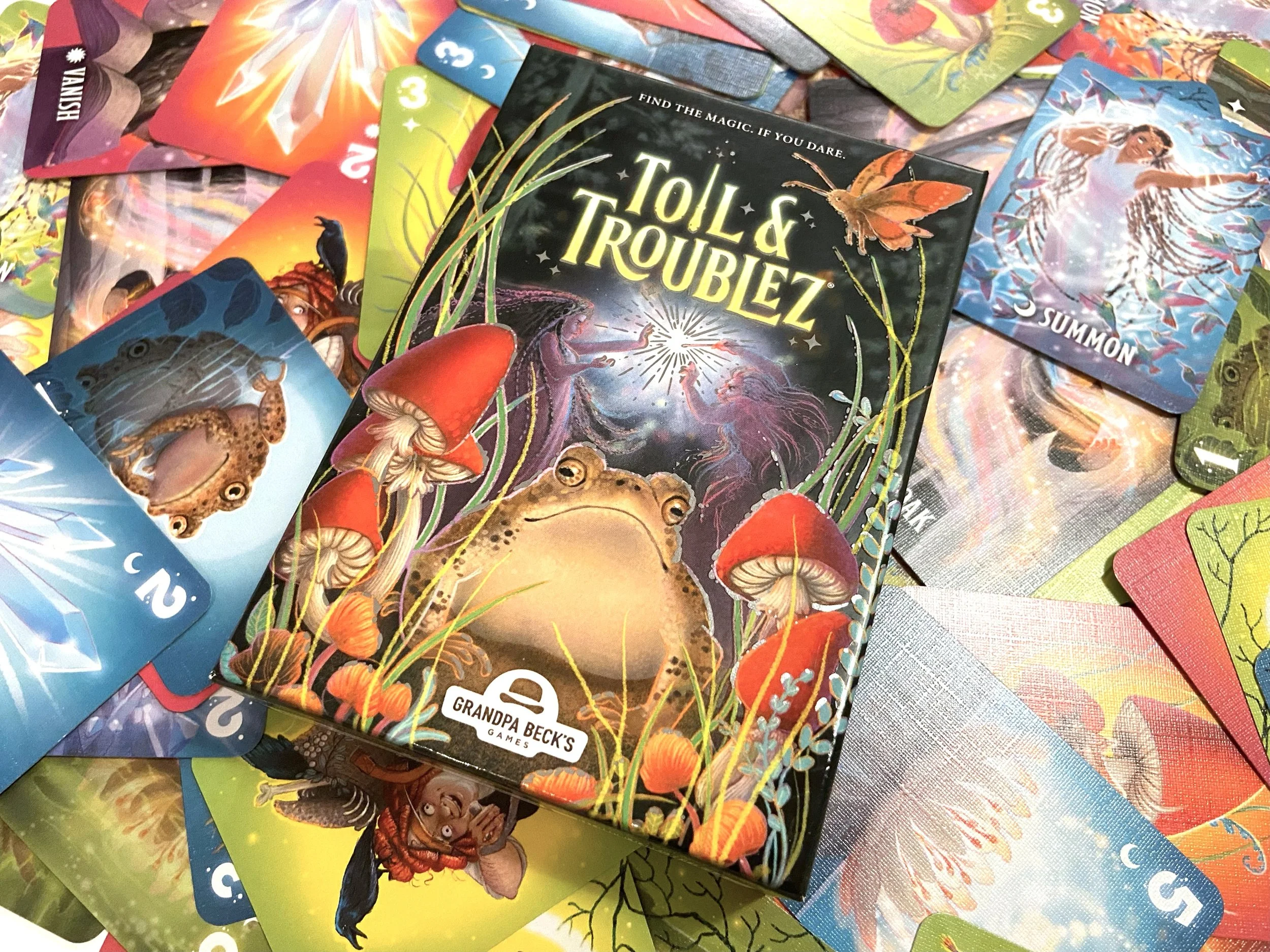Antiquity Quest: Another Family Game Night Hit from Grandpa Beck's
Grandpa Beck’s has built a tremendous reputation for family card games, and it’s always a pleasure to see what they invent next. The games are always well-balanced, include interesting strategy, and they also manage to appeal to a very wide age-range over multiple generations. Because of all of that, at least in my mind, they tend to be exactly the type of card games you might grab if you’re gathering together with the extended family for Thanksgiving or Christmas.
I must admit, I also love that Grandma Beck includes a secret family recipe inside every game (chocolate chip cookies in this case), and Grandpa Beck includes a cell phone number with instructions to call or text if any issues arise. It’s a great family business and I really appreciate the details of how they run things. So it was not a hard decision at all to make our most recently played Grandpa Beck’s game our Game of the Month.
Antiquity Quest is the name of this newest addition to our Grandpa Beck’s collection. It’s a set-making game that accommodates an impressive 8 players. But we only have 4 members in our family, and the vast majority of our game-playing takes place within the family. So games that have the ability to accommodate more players than that often don’t get the chance to show their full potential to us. What we actually end up looking for in games that boast a high player count is that they are still just as much fun to play with a lower player count.
Disclosure: Grandpa Beck’s Games provided us with a copy of Antiquity Quest. All thoughts and opinions are our own. Links in this article may lead you to view Antiquity Quest for sale from affiliate partners.
In fact, it’s not uncommon at all for my wife and I to play family games without the kids, so it’s very nice to have games that work well 1-on-1 too. And Antiquity Quest seems like a true rarity to me - because it’s playable up to a whopping 8 players, but it’s still fun to go head-to-head with only 2 players.
But I still readily admit that every player you’re able to add to this game will increase the strategy and the complexity. That’s because a good portion of the strategy in this game revolves around timing. You are rewarded in some ways for being patient while building your sets in your hand, and rewarded in other ways for being quick and being the first to get rid of your cards. And, worst of all, you always run the risk of an opponent getting rid of their cards first and then losing points for all of the cards stuck in your hand. So, naturally, the more players there are, the trickier it is to get your timing right.
Antiquity Quest is officially recommended for ages 10+, and, as is so often the case, I think that’s a bit of an overestimate. Our 9-year-old seldom struggles with rules in games these days, and the gameplay and set-making in Antiquity Quest is no problem. Likewise, our 6-year-old probably can’t handle this one by herself yet, but she’s not too far away. I like to use their experience with games as our measuring stick, and I’d probably peg this one at 8+.
The game features a cute story as well. The quick version is that we are all archeologists trying to build a collection of antiquities for a museum. We’re working for a friendly professor named Nigel Remington, and watching out for a thief named Tess Wynter stealing all of the precious treasures. Of course the story is always worth mentioning for us, because storytelling and role-playing always makes a big difference with engagement in our kids.
How to Play Antiquity Quest
There are two main sets of rules for Antiquity Quest (and even a variation to play with partners!) - the basic ruleset and the advanced version. The advanced version adds extra powers to the character cards, and gives each player a particular color suit to focus on to score bonus points. I point this out because I really appreciate it when games provide room to grow for a family. But, generally speaking, we typically play the most basic versions of family games at the moment, so that’s the version I’ll focus on.
Every player gets 10 cards in their hand and 10 more cards in a “cache.” You can’t pick up your cache into your hand until you completely empty your hand, and when you’ve emptied your cache the round is over. Everyone else gets to have one more turn, and then you add up your points (and subtract points if you were stuck with any cards in your hand).
There are basically three types of cards in the game - character cards (Remington and Wynter), antiquity cards, and treasure cards. Remington and Wynter cards have special powers, and extra pesky powers in the advanced version to increase strategy significantly.
During your turns you are basically trying to make sets out of your cards. There are six different suits of antiquity cards - represented by both different colors and symbols - and the cards also number 1-5. “Perfect” sets of 1-5 in a particular suit (or 5 distinct treasure cards) are worth the most points. “Standard” sets of any 5 cards in the same suit or 5 treasure cards including duplicates are the next most valuable. And the least valuable collections are “mixed” collections that include both treasure cards and antiquity cards of one suit.
It’s also okay if you’re in a hurry and you want to play cards before you have a complete set. You can play incomplete collections, but be careful, because other players can play cards on your collections to complete them and make them less valuable. There’s interesting strategy in this action, because, even though they’re basically giving you some of their own potential points from their hand, they’re also robbing you of potential points at the same time. And of course this strategy increases several-fold when there are multiple players competing and everyone is aware of who is in the lead!
Our Experience with Antiquity Quest
As I alluded to before, one of the most interesting parts of this card game is getting the timing right. And it’s almost impossible to predict when you’re playing with the maximum number of players. Someone will undoubtedly get stuck with many negative points every single round. In fact, it’s easy to get surprised even with only 2 players!
The very first time we tried this game, my wife and I played by ourselves. About halfway through the game I was feeling quite confident. I had several more complete collections than her, and I was beginning to feel like I had an unfair advantage since I was the one that digested the rulebook.
I picked up my cache a lot sooner than my wife did, and began to just try to get rid of my cards to end the round. But then, out of seemingly nowhere, my wife placed down several complete collections at once, got rid of all of her cards, earned the 500 bonus points, left me with some negative points, and won our first playthrough quite convincingly. I should have known better than to get too confident, because let’s just say losing in our battles is not unfamiliar to me.
I’m excited that we’ve completed our Grandpa Beck’s collection with Antiquity Quest. We have lots of extended family that love card games - and our son in particular seems to have picked up on that family tradition. He often plays classic card games with his grandma, and it’s fun to introduce everyone to a new game - especially from a company that focuses so much on family.
You can find Antiquity Quest on Amazon or directly from Grandpa Beck’s Games.
But remember, if you ever want to try any card games from Grandpa Beck’s, you can use code DADSUGGESTS at GrandpaBecksGames.com for 15% your purchase!
Do you have a favorite family card game or Grandpa Beck’s game? Let us know in the comments!
